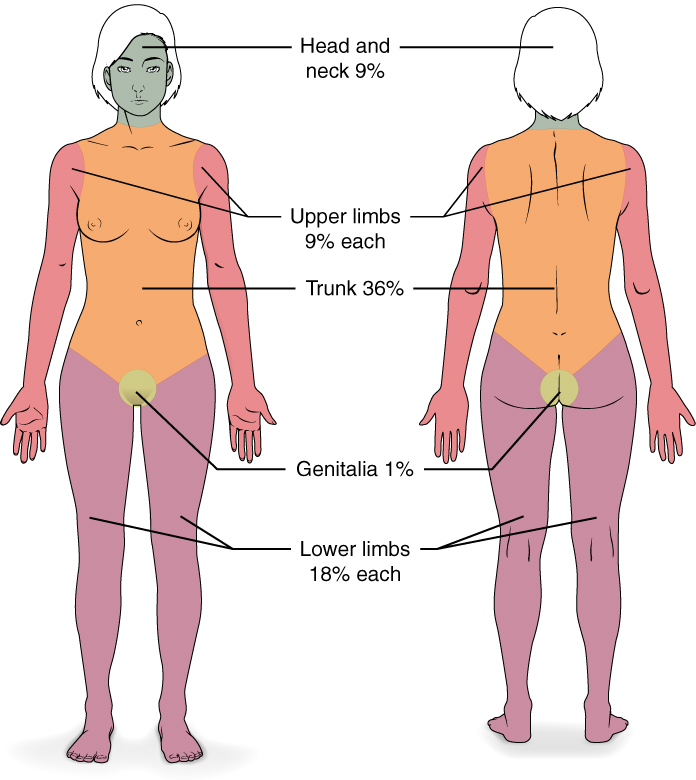| << Chapter < Page | Chapter >> Page > |
Burns are sometimes measured in terms of the size of the total surface area affected. This is referred to as the “rule of nines” , which associates specific anatomical areas with a percentage that is a factor of nine ( [link] ). This allows first responders to quickly estimate the percentage of the BSA (body surface area) that is damaged. This calculation allows a quick decision to be made about the level of care a patient needs. A patient with extensive burns needs to be sent to a burn center quickly for life saving treatment unavailable at regular hospitals.. Burns are also classified by the degree of their severity.

Most cuts or wounds, with the exception of ones that only scratch the surface (the epidermis), lead to scar formation. A scar is collagen-rich skin formed after the process of wound healing that differs from normal skin. Scarring occurs in cases in which there is repair of skin damage, but the skin fails to regenerate the original skin structure. Fibroblasts generate scar tissue in the form of collagen, and the bulk of repair is due to the basket-weave pattern generated by collagen fibers and does not result in regeneration of the typical cellular structure of skin. Instead, the tissue is fibrous in nature and does not allow for the regeneration of accessory structures, such as hair follicles, sweat glands, or sebaceous glands.
Sometimes, there is an overproduction of scar tissue, because the process of collagen formation does not stop when the wound is healed; this results in the formation of a raised or hypertrophic scar called a keloid . In contrast, scars that result from acne and chickenpox have a sunken appearance and are called atrophic scars.

Notification Switch
Would you like to follow the 'Integumentary system' conversation and receive update notifications?